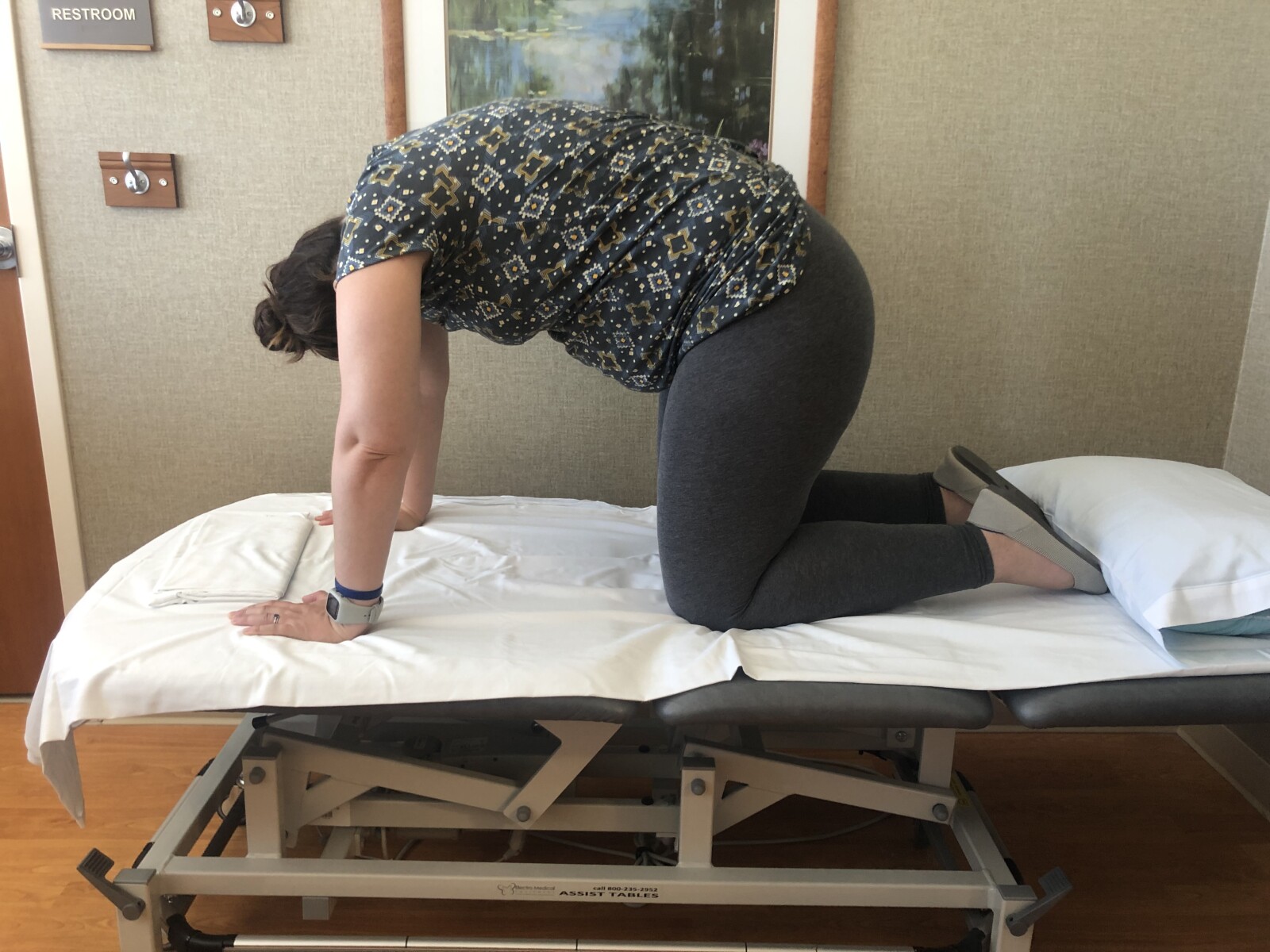
What is pelvic floor PT?
Pelvic floor PT is physical therapy from specialized physical therapists for diagnoses or conditions related to functions of the pelvis. This includes anything related to the bladder (peeing), bowel (pooping), or sex. It also includes any kind of aches or pain in and around the pelvis. This would include the groin, the pubic bone, low back, and abdomen. This could be for women at any age really, and some men too. There’s also a lot that a pelvic floor PT who has some obstetric training (like me!) can do during pregnancy and postpartum, since all that happens in the pelvis too.
What happens when I go see a pelvic floor PT?
The PT will talk with you about your complaints, your goals, your daily habits. Then usually there will be a physical assessment of your muscles, your movement, your posture. This could include an internal assessment of the pelvic floor muscles or not. It depends on your comfort level and if the PT thinks it is indicated. There is no need to do anything internal on the first day. Your PT should always explain the process to you and ask for your consent before proceeding! After this evaluation, your PT will be able to decide your baseline and plan the steps to help you achieve your goals.
Then what?
You and your PT will work together to create your plan of care. This might include exercises, or other things for you to do on your own at home, education, and/or lifestyle changes to make to help you achieve the goals you set out. You and your PT will decide how often you are going to meet, and if those meetings will be in person as is traditional, or perhaps a combination of in person and virtual.
I often find in my practice that I function as a health coach and a coordinator of patient care with other specialties that may be needed. Your PT should spend time with you to hear about the other members of your medical team. It’s important for everyone to be on the same page!
What questions do you have about pelvic floor/pregnancy/postpartum PT? Send them over so I can answer in a future blog post.

This is a question I get asked often, and I LOVE helping people get started treating these patient populations! There are so many people who suffer endlessly, or people who if treated early could ward off endless suffering! There are not enough pelvic floor trained PTs out there! I think if you have the slightest interest, you should pursue it. The work is incredibly rewarding and can definitely help you stand out from the crowd of therapists.
The most common continuing education courses come from two institutions, and then there are a handful behind those that offer courses on very specific topics within pelvic health. I’ve linked all the websites here in one convenient place.
The two main ones are: APTA Pelvic Health and Herman and Wallace.
The others are Alcove, Pelvic Guru, Institute for Birth Healing, Entropy PT & Wellness and likely several others.
Most of the above also have online resources or webinars but some other places that offer specifically online coursework are Medbridge and Evidence in Motion (EIM).
There’s also the possibility of applying for a residency program. You can check out the description of a women's health residency here and another blog post about deciding if it right for you here. I did not do a residency. I was fortunate to have my final clinical rotation before graduation from my DPT program to be with a pelvic health specialist. I took Pelvic Level 1 through Herman and Wallace before this internship started as preparation. It was an incredible 12 weeks, and I was able to start treating these patients from the get go after graduation in my own clinical practice.
In my clinic now, I see 100% pelvic health patients. What people don’t realize is that a lot of first level pelvic floor work is really orthopedics, but with the knowledge of how to assess the pelvic floor. This assessment can occur internally or externally. Again, just to dip your toe in the water, there’s so much, and so many people you could help in your practice without diving deep into pelvic floor knowledge. But once you get your toes wet, I think you’ll want to learn more!
I hope this was helpful! If you need some more guidance, I’d be happy to chat with you specifically about your goals and what vision you have for your practice. Hit contact me below and tell me why you want to make a change in your practice and knowledge!
Wouldn't it be great to make money while you're not at work? I love helping PTs add an income stream to their already existing practices. Hit contact me now and let's chat about it!
Ok friends! Have the best week ever!

Why is a Physical Therapist teaching Labor & Delivery classes?
Physical Therapists are body movement experts! We have doctorate level training in assessing movement dysfunction and rehabilitating to get back to optimal movement, usually without pain! I have advanced training in obstetric and pelvic floor physical therapy and am such a nerd about all things pregnancy, birth, postpartum and motherhood.
During labor, the uterus is contracting. Why? To move the baby down into the pelvis and birth canal! The position the baby is in the uterus and continues as he moves down into the pelvis can drastically affect your labor experience. In my opinion, not enough attention is paid to try to make this optimal. There are techniques, positions and education to learn to help this happen in an easier way, or to help you get through it!
While I know other birth preparation classes do a great job teaching the basics of breathing and possible different interventions, being a physical therapist offers me a unique perspective to work with the joints, muscle, ligaments in the pelvis and what needs to happen from a biomechanical perspective to have that baby! There is a heavy focus on teaching your partner, or whoever may be supporting you during labor to help and advocate for your wants and needs for this experience. These things include:
Positions to be in at different stages
Positions with and without an epidural
Ideas for creating a relaxing birthing environment
Strategies for pain control
How to breathe and push your baby out
Like this content? You might LOVE my free guide for a healthy holistic pregnancy! And go check out my Facebook page Abby Inman PT, DPT.




